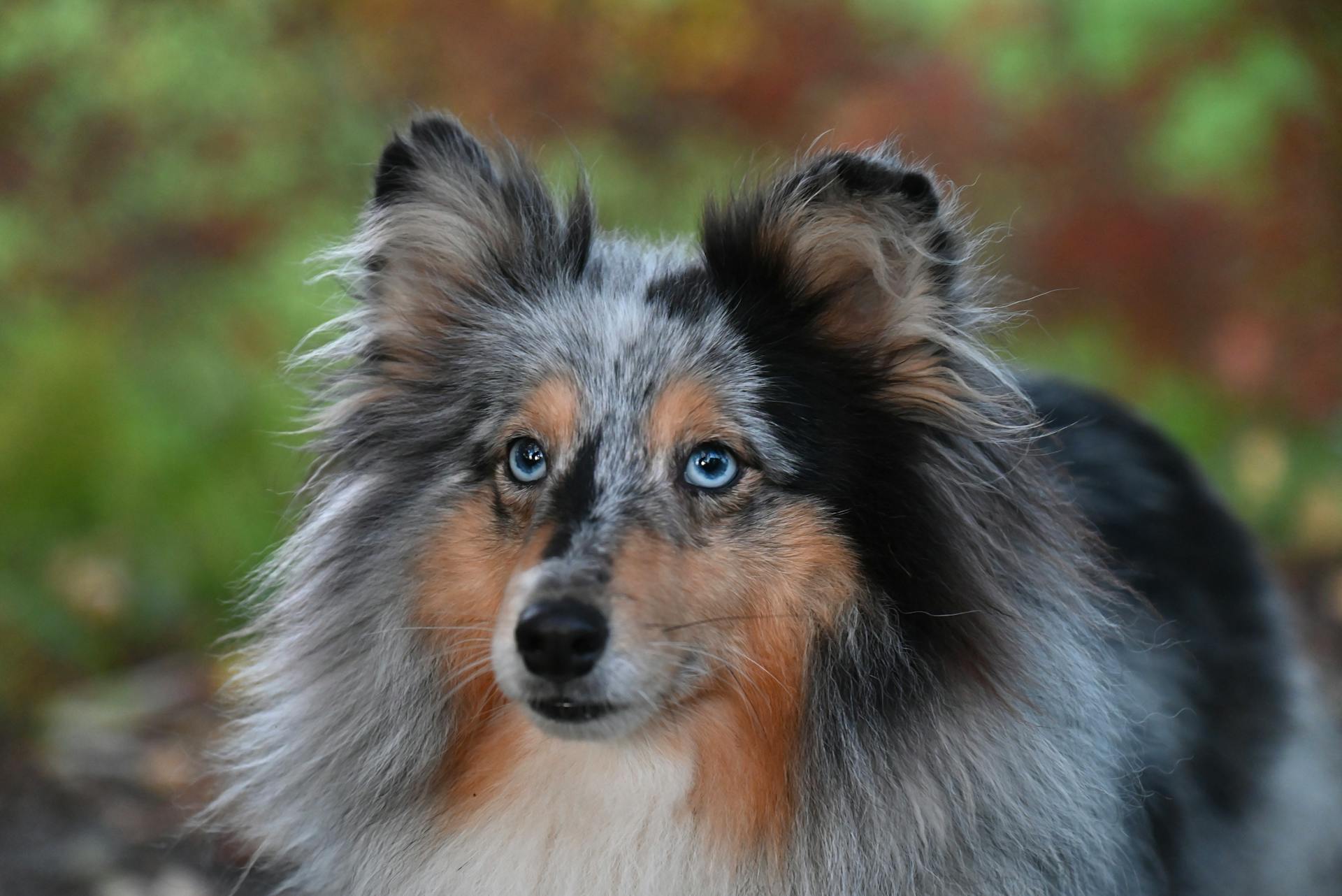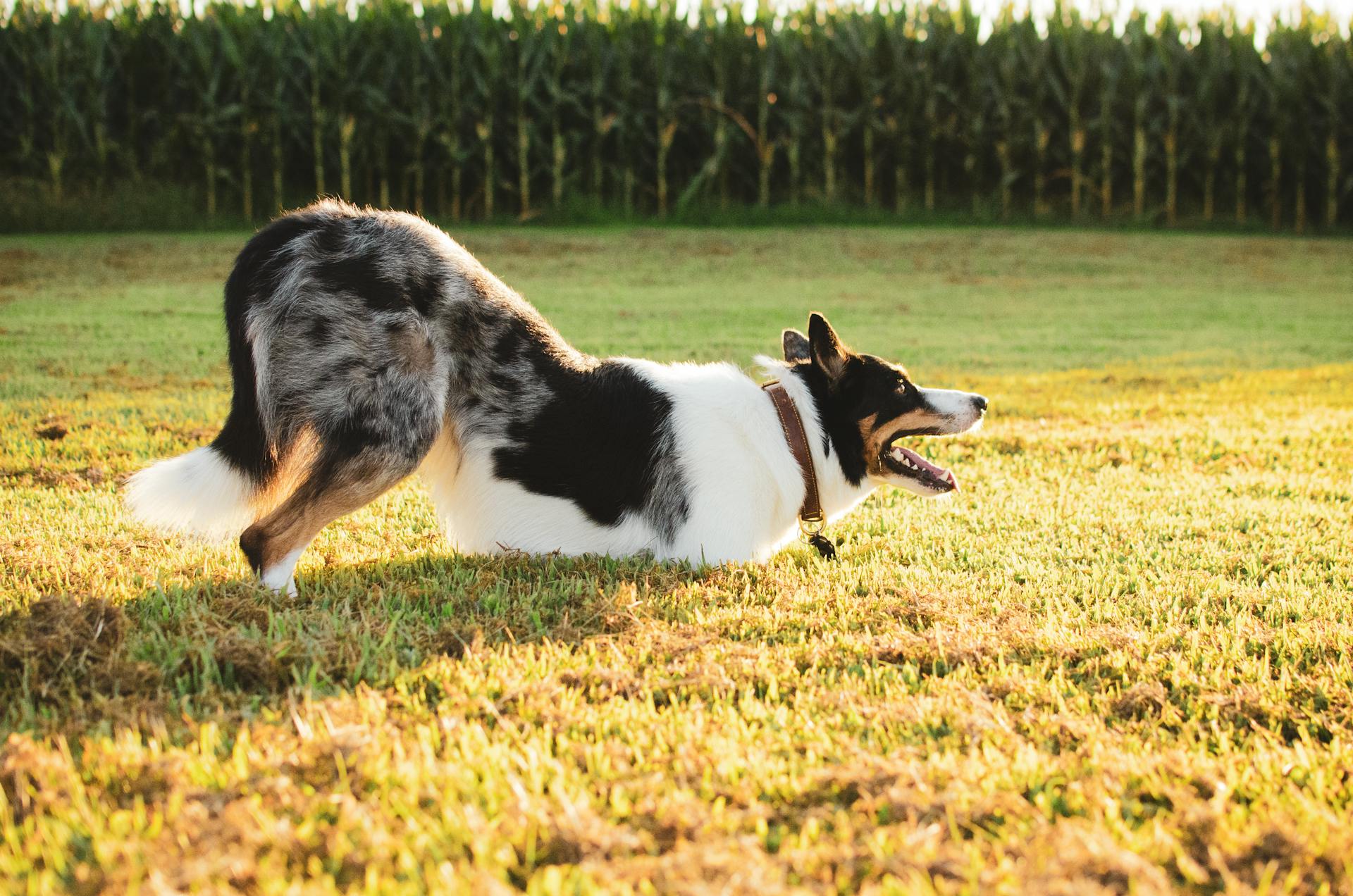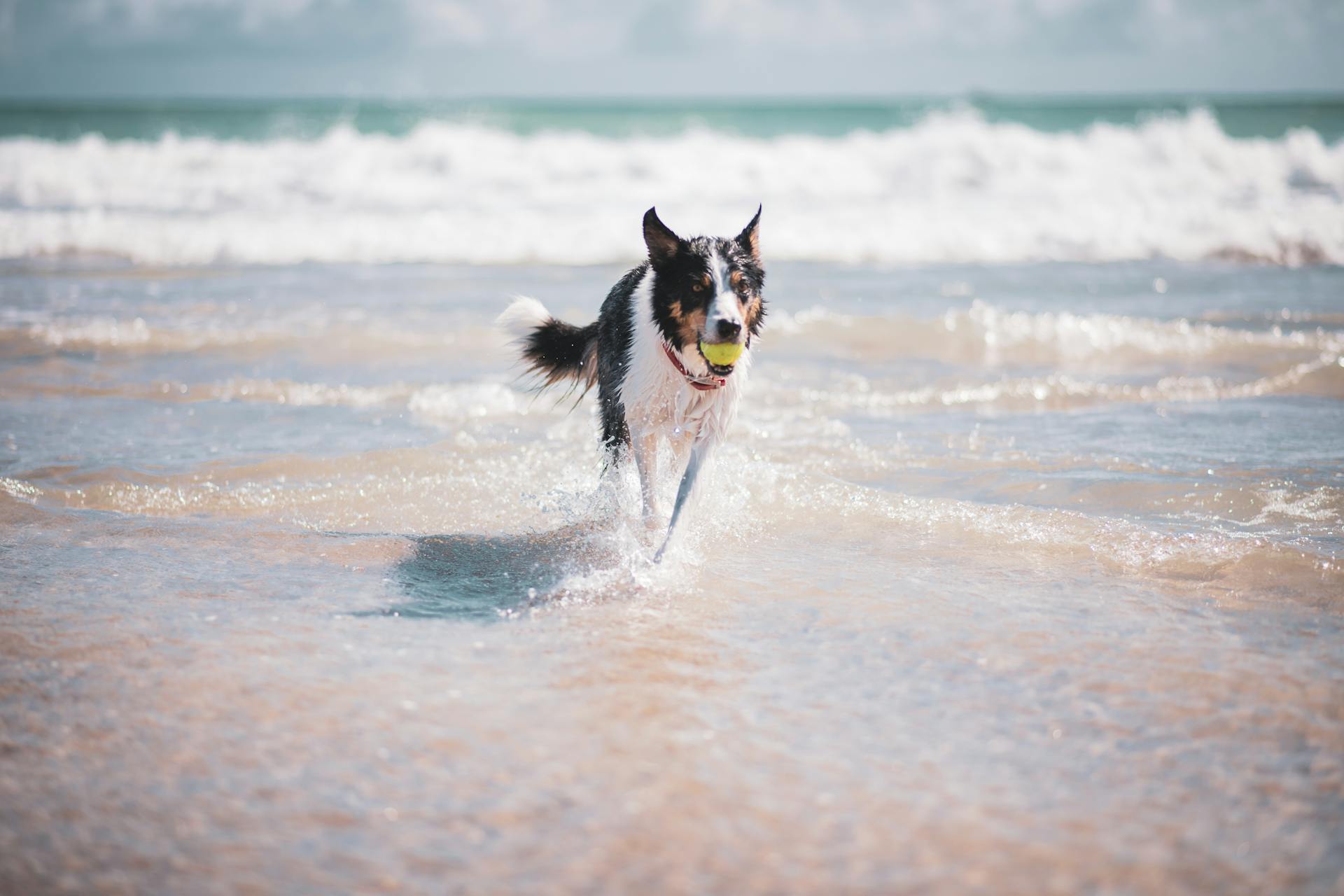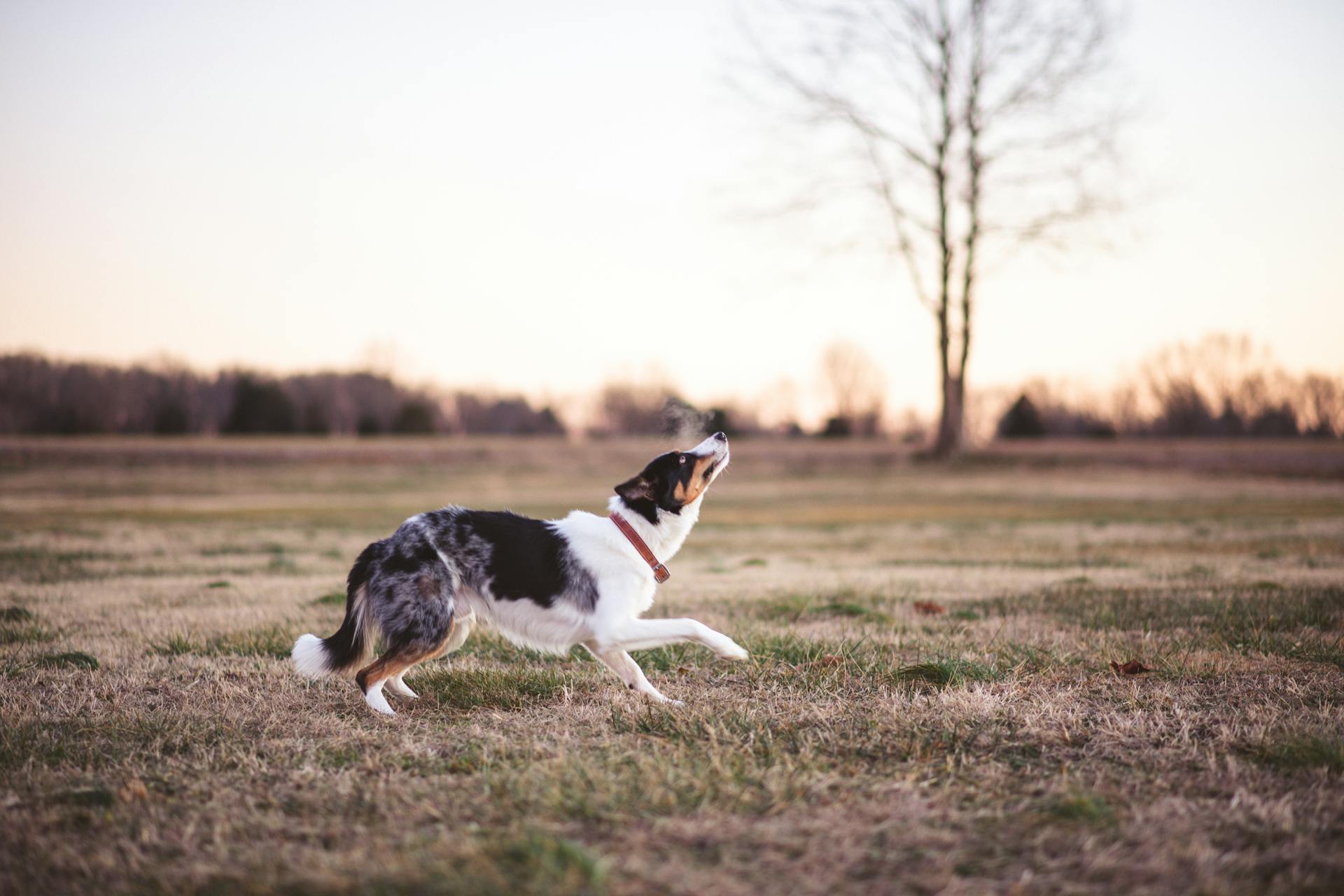
Blue Merle Chiweenies are prone to eye problems, specifically Progressive Retinal Atrophy (PRA) and Collie Eye Anomaly (CEA), which can lead to blindness.
Regular veterinary check-ups can help detect these issues early on, allowing for prompt treatment and management.
A balanced diet is crucial for maintaining your Blue Merle Chiweenie's overall health, with a recommended daily intake of 1/4 to 1/2 cup of high-quality dog food.
Providing plenty of fresh water and a nutritious diet can help prevent digestive issues like diarrhea and vomiting, which are common in Chiweenies.
Blue Merle Chiweenies are generally low-maintenance when it comes to grooming, requiring only occasional nail trimming and ear cleaning.
However, they do shed moderately, so regular brushing is essential to prevent matting and tangling of their coat.
Health Considerations
Blue merle Chiweenies can be a bit more prone to health issues than other Chiweenies, but with the right care and attention, they can live long and happy lives.
One of the main health concerns for blue merle Chiweenies is deafness, which can occur when they inherit two copies of the merle gene.
Intervertebral disc disease (IVDD) is another common health issue that can affect Chiweenies, including blue merle ones. This condition can cause severe pain, impairs movement, and can even lead to partial paralysis.
To minimize the risk of IVDD, it's essential to keep your Chiweenie's weight in check and avoid allowing them to jump on or off the furniture.
Chiweenies are also prone to dental disease, which can cause bad breath, tartar buildup, and swollen, red gums.
Luxating patella is another health issue that can affect Chiweenies, including blue merle ones. This condition can cause chronic dislocation and increase the risk of other injuries, such as torn cruciate ligaments.
Here are some common health issues that can affect Chiweenies:
- Intervertebral disc disease (IVDD)
- Dental disease
- Luxating patella
- Deafness
- Patellar luxation
- Hip dysplasia
- Color dilution alopecia
While these health issues can be a concern, it's essential to remember that many Chiweenies live long and healthy lives with proper care and attention.
Characteristics and Traits
The blue merle Chiweenie is a loyal and loving companion, just like its parent breeds. It's not uncommon for them to have a favorite human parent, and they can be quite choosy about who they shower with affection.
This breed is also fearlessly protective of its family and home, making it a great little guard dog. However, be prepared for some barking, as both dachshunds and Chihuahuas are prone to this trait.
As a fragile breed, the blue merle Chiweenie isn't suitable for households with small children, as they can be prone to nipping and don't stand up to rough play.
Blue Merle
The blue merle pattern is a unique variation that occurs in dogs with a white and black coat, distinct from the brown on brown or black on brown patterns.
It's worth noting that the merle gene is not always dominant, as it's incompletely dominant, meaning it doesn't always express itself fully.
A fresh viewpoint: Brown Chiweenie Puppy

A dog carrying the double merle gene is not a pure breed, and it can only be produced by breeding two merles together.
The resulting litter will have a specific distribution of coat colors, with ¼ solid-colored, half simple merles, and ¼ double-merles.
The merle gene not only affects the base coat color but also modifies eye color and coloring on the nose and paw pads.
In some cases, the merle gene can even change dark eyes to blue.
Characteristics
The Chiweenie is a breed with a mouthful of a name, but it's also known by several adorable nicknames. One of the most widely used ones is Chiweenie.
This breed is a mix of a Chihuahua and a Dachshund, which explains its unique characteristics. The Chiweenie is a small dog, often weighing between 8-18 pounds.
One of the most distinctive features of the Chiweenie is its short, sturdy body. Its legs are short, but its body is long, making it a compact and adorable package.
Check this out: Short Haired Chiweenie
The Chiweenie's coat can be a variety of colors, including fawn, black, and brown. Its short coat requires minimal grooming, making it a great choice for busy owners.
In terms of temperament, the Chiweenie is known to be friendly and outgoing. They make great companions for families and singles alike, as long as they receive plenty of attention and affection.
Temperament & Intelligence
The Chiweenie's temperament is a unique blend of their parent breeds' traits. They're generally friendly, loving, and affectionate with their families, but can be aloof with strangers.
Chiweenies are excellent watchdogs due to their alert nature and tendency to bark at everything. But don't expect them to offer much in the way of protection - just a loud canine alarm!
These little dogs are highly energetic and curious, always wanting to play. Be prepared to spend a good bit of time playing with your Chiweenie to keep it engaged.
One downside to the Chiweenie is their tendency to bark, thanks to their Dachshund and Chihuahua heritage. Unfortunately, both breeds are known serial barkers.
The Chiweenie's loyalty and protectiveness make them a great family pet, but they can be fragile and not suitable for households with small children. They may also nip if they take after their Chihuahua side.
Chiweenies can inherit any traits from their parent breeds, including the strong-willed nature of Dachshunds and the feisty personality of Chihuahuas. This means they can be stubborn and resistant to training.
Consistent positive reinforcement training and rewards can help curtail undesirable behaviors in Chiweenies. Keep training sessions short and fun to hold their attention, especially since they can be spunky and strong-willed.
Explore further: Micro Teacup Chihuahua
Grooming a Dachshund Chihuahua Mix
Grooming a Dachshund Chihuahua Mix is a relatively low-maintenance task, but it does require some regular attention.
You'll need to brush your Chiweenie's coat regularly, depending on its length. Short-haired Chiweenies need brushing only weekly, while medium- and long-haired ones require more frequent brushing, sometimes even professional grooming.
Consider reading: Long Haired Chiweenie Puppies
Brushing frequency varies, but daily or weekly brushing is a good rule of thumb, depending on the hair length. You can use a regular brush or a dog-specific brush, whichever your Chiweenie prefers.
To keep your Chiweenie's ears clean and free of infections, clean them out with a damp washcloth once or twice per week, and always keep the insides of their ears dry. This is especially important for Chiweenies with droopy ears.
In addition to brushing and ear care, you'll need to trim your Chiweenie's nails regularly to prevent click-clacking and potential health issues. Regular nail trims are essential for all Chiweenies, regardless of coat type.
Here's a quick rundown of grooming tasks for Chiweenies:
Remember to brush your Chiweenie's teeth daily with a dog-specific toothbrush and toothpaste to prevent dental problems. This is especially important for Chiweenies, as they can be prone to dental disease.
Living Needs and Environment
Living in a home with a blue merle chiweenie requires careful consideration of their unique needs and preferences. They thrive in apartments, but it's essential to have as few stairs as possible to prevent disc dislocation and other skeletal problems.

A good idea is to get a PawRamp to help your little pup climb on furniture. Your blue merle chiweenie will love you for it, and it's an ideal gift for any dachshund owner.
Daily exercise is crucial for blue merle chiweenies, with a 20 to 30-minute walk required each day, accompanied by some playtime indoors or in a securely fenced yard. They're not suited for life outside in a kennel due to their sensitivity to cold.
Blue merle chiweenies adore being around their human family and can suffer from separation anxiety, so it's essential to spend quality time with them. Raising a puppy can be hard work, especially for busy owners or seniors.
Their small size makes them prone to being accidentally injured by children, so it's crucial to supervise playtime and teach kids how to interact with pets gently. Older children can do well with a blue merle chiweenie, but it's best to contact foster-based rescues to find a suitable match.
Blue merle chiweenies can be picky about their four-legged friends and may not get along with other pets, especially smaller animals like bunnies or hamsters. They might even chase squirrels, so it's essential to keep them on a leash or in a fenced yard when outside.
Training and Nutrition
Training your blue merle Chiweenie from puppyhood is crucial, as they can be easily distracted and require plenty of positive reinforcement and patience.
Use plenty of positive reinforcement and unlimited amounts of patience when training your Chiweenie. Start training your puppy as soon as possible to help them become a well-behaved adult dog.
Taking your puppy to doggy daycare, puppy classes, and the local dog park can help tone down their feisty behavior toward other dogs and strangers. This socialization is essential for your Chiweenie's development.
Feeding your blue merle Chiweenie dry kibble is essential for their oral health. The biscuits in dry kibble help scrape plaque-causing bacteria off their teeth, preventing gingivitis and canine periodontal disease.
Divide your Chiweenie's daily ration of half a cup of good quality dry kibble into several small feeds to keep them feeling full and prevent gastric upsets. This feeding schedule is especially important for the first six months of your puppy's life.
Expand your knowledge: Chiweenie Feeding Chart
Training

Training your Chiweenie from puppyhood is essential, as they can be easily distracted and require plenty of patience. Start training early and use positive reinforcement to help them learn.
The dachshund Chihuahua mix can be feisty toward other dogs and strangers, so socializing them from an early age is crucial. This can be done by taking them to doggy daycare, puppy classes, and the local dog park.
Walking around your neighborhood exposes your Chiweenie puppy to various sights, sounds, and people, helping them become more confident and calm. If you plan to train your pup to walk on a harness, make sure to pick the right size.
Suggestion: Training an Australian Cattle Dog
Nutrition
Stick to the same high-quality dry kibble for your Chiweenie puppy's first six months of life. This consistency will help prevent gastric upsets.
You'll need to feed your adult Chiweenie around half a cup of dry kibble every day. Divide this ration into several small feeds to keep your pup feeling full.
Feeding your Chiweenie dry kibble is crucial because the biscuits help scrape plaque-causing bacteria off their teeth. This prevents gingivitis and canine periodontal disease.
Be careful not to overfeed your Chiweenie, as they can easily become overweight or obese. It doesn't take much to tip the scales.
Dogs Bark Frequently
Chihuahuas are known for being rather yappy little dogs. They often seem to have little-dog syndrome, where they believe they’re much larger than they are, causing them to bark aggressively at just about everything.
Dachshunds are also prone to barking, making them an annoyance for neighbors. Their loud and frequent barking can be quite a challenge to deal with.
Chiweenies, being a mix of Chihuahuas and Dachshunds, inherit this barking trait from their parent breeds. Unfortunately, this means they bark far more than most dogs.
The good news is that with proper training, you can help reduce your Chiweenie's barking. This may involve teaching them the "quiet" command or redirecting their attention to a toy or treat.
A unique perspective: Blue Heeler Barking
Parent Breeds and General Information
Designer Dogs, like the Blue Merle Chiweenie, are created by cross-breeding two purebred dogs, inheriting a proportion of their looks and personality from both parents.
Both parent breeds play a significant role in determining the characteristics of the puppies, with one parent's influence often outweighing the other.
Knowing more about the parent breeds is crucial in understanding what to expect from your Blue Merle Chiweenie, as they may inherit health conditions common to both parents.
The Chihuahua
The Chihuahua is a small dog breed that has a merle pattern in its coat, produced by a single copy of the M allele.
The merle pattern is identified by DNA testing, which shows the dog has the genotype Mm, meaning it has one allele for merle and one for non-merle.
People often refer to a dog with the merle pattern as simply a "merle" Chihuahua, but technically, it's a specific genetic trait.
The merle gene is responsible for the unique coat pattern, but it's not the only factor that determines the variety of colors and patterns seen in merle Chihuahuas.
For another approach, see: Small Dogs Chihuahua
Parent Breeds
Designer dogs are created by cross-breeding two purebred dogs, inheriting a proportion of their looks and personality from both parents.
The puppies will often take more after one parent than the other, so it's essential to know the characteristics of both parent breeds.
Mixed breeds are often healthier than purebred dogs, but they can still inherit health conditions common to both parents.
You should research both parent breeds to get a good idea of what to expect from your new dog.
Readers also liked: Shih Tzu Purebred
Size and Appearance
The blue merle Chiweenie is a tiny canine companion, typically weighing no more than 10-20 pounds when fully grown.
Their height is usually around 12-15 inches tall, but some Chiweenies can stand as short as 6-10 inches tall.
Their coat can be short to medium length and is usually silky to the touch, coming in a range of colors including blue, which is a beautiful and unique feature of the blue merle Chiweenie.
Their coat color can also include tan, brown, black, blonde, brindle, and multi-colored, adding to their adorable and one-of-a-kind appearance.
Eye color can be brown, green, blue, or black, and their ears can be perky or floppy, making each Chiweenie a sweet and special companion.
A fresh viewpoint: Brown and Black Rat Terrier
Dogs
The Chiweenie is a tiny pup that's incredibly loyal and fearless too. They're a mix of a Dachshund and a Chihuahua, and take some of their personality and looks from each parent.
The designer Chiweenie cross-breed first appeared in the early 1990s. They've grown in popularity over the following decades.
Tuna, a Chiweenie with 2 million Instagram followers, is a great example of the breed's appeal.
Appearance
The Chiweenie's appearance is a delightful combination of its parent breeds. Their short legs and long, sausage-shaped body make them a charming sight to behold.
Typically, Chiweenies weigh no more than 10-20 pounds when fully grown. They usually stand no more than 12-15 inches tall.
Their face can be both slightly elongated like the dachshund or rounder and more apple-shaped like a Chihuahua. You won't know which until your puppy grows up!
Perky or floppy ears can adorn a Chiweenie's head, adding to their unique charm. Their silky coat is a joy to behold, ranging in color from tan and brown to black or blonde.
Eye color can be a beautiful brown, green, blue, or black, adding to the Chiweenie's irresistible cuteness.
Three Little-Known Facts About
Here are three little-known facts about size and appearance that might surprise you.
The average height of a human is around 5 feet 9 inches, which is surprisingly consistent across the globe.
In some cultures, the ideal body shape is considered to be more hourglass, with a smaller waist and larger hips.
The human nose is capable of detecting over 1 trillion different scents, making it one of the most sensitive organs in the body.
Frequently Asked Questions
Are blue merle Chihuahuas rare?
Blue merle Chihuahuas are rare due to the recessive gene responsible for the color being overpowered by dominant genes. This makes them a unique and sought-after variation of the breed.
What are the health issues with blue merle Chihuahuas?
Blue merle Chihuahuas may be prone to hearing and vision problems, including deafness and eye abnormalities, due to the merle allele
Featured Images: pexels.com


